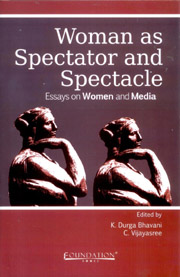Book contents
- Frontmatter
- Contents
- Notes on Contributors
- Preface
- Introduction
- Part I Media and Gender (In)Justice
- Part II Framing Women
- 7 Images of Women in Indian Soap Operas
- 8 “People Said I Created Pornography”: Sexuality, the Gaze and Rituparno Ghosh
- 9 Women's Issues in Telugu Films: Limits of Social Reform
- 10 A Case Study of the Reel-life ‘Wimin’ in Fire and Girlfriend: Fruition to Miso Phallicism from mere Feminism
- 11 Gender at Cyberspace: Who's Online?
11 - Gender at Cyberspace: Who's Online?
from Part II - Framing Women
Published online by Cambridge University Press: 05 November 2011
- Frontmatter
- Contents
- Notes on Contributors
- Preface
- Introduction
- Part I Media and Gender (In)Justice
- Part II Framing Women
- 7 Images of Women in Indian Soap Operas
- 8 “People Said I Created Pornography”: Sexuality, the Gaze and Rituparno Ghosh
- 9 Women's Issues in Telugu Films: Limits of Social Reform
- 10 A Case Study of the Reel-life ‘Wimin’ in Fire and Girlfriend: Fruition to Miso Phallicism from mere Feminism
- 11 Gender at Cyberspace: Who's Online?
Summary
What is perhaps central to the debate on women in media is the question of how completely a woman is identified with her body and how limited she is to her gender. When we talk about women, the subtext is usually the body. Critical discourse on the representation of women in media invariably focuses on how her body is represented. And when we say the media is sexist or insensitive, it is the treatment of women's bodies that we are troubled by. Therefore, the site on which my paper is built is primarily the body. However, in a polemical sleight of hand, I intend to make the body disappear and explore how gender is construed.
Discourses surrounding the body often hinge on the classic binary of sex: male and female. But how real is this binary? Tracing its origins, Thomas Laqueur, in his extensively researched book, Making Sex: Body and Gender from the Greeks to Freud, shows how our concept of the body has evolved from the one-sex to the two-sex model. Examining medical and philosophical literature, and accounts from reproductive anatomy and physiology from the second century A.D. down to the twentieth century, he shows how descriptions of the body were used by scientists, political activists, literary figures and theorists to explain gender. In the one-sex model, prevalent from antiquity to the early seventeenth century, man was the only sex and woman was merely an inversion of this basic form.
- Type
- Chapter
- Information
- Woman as Spectator and SpectacleEssays on Women and Media, pp. 94 - 100Publisher: Foundation BooksPrint publication year: 2010



